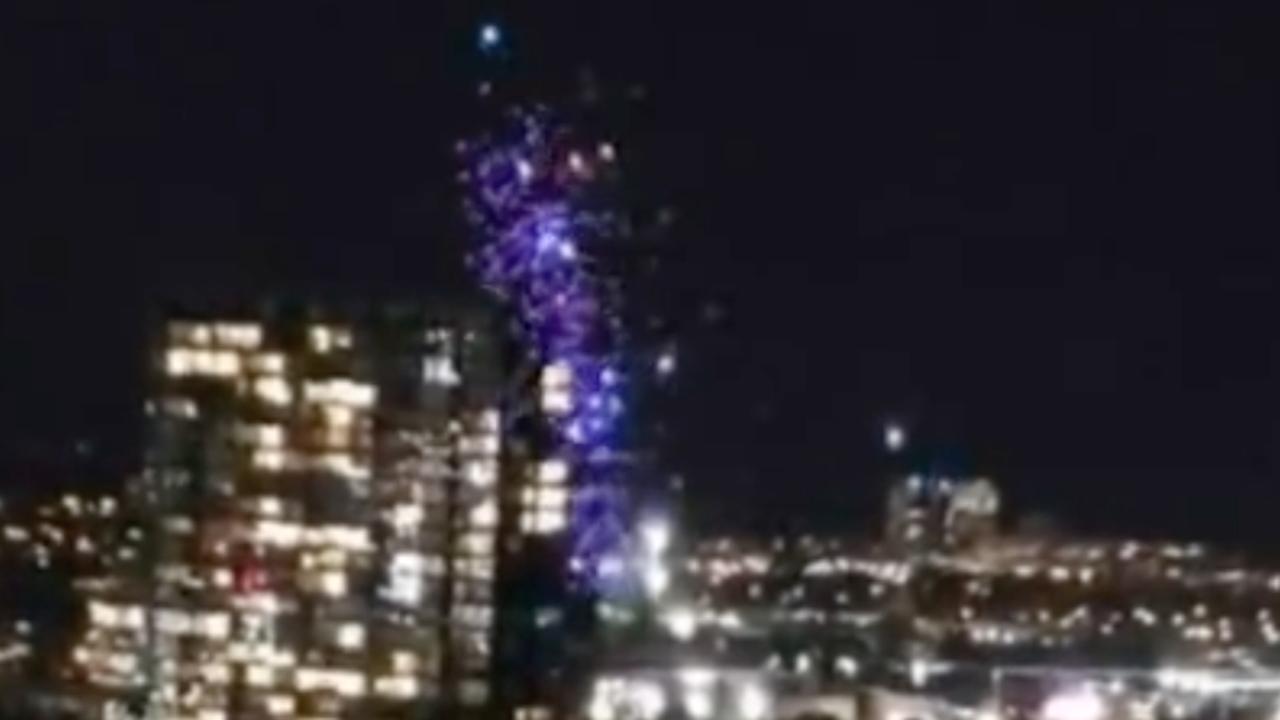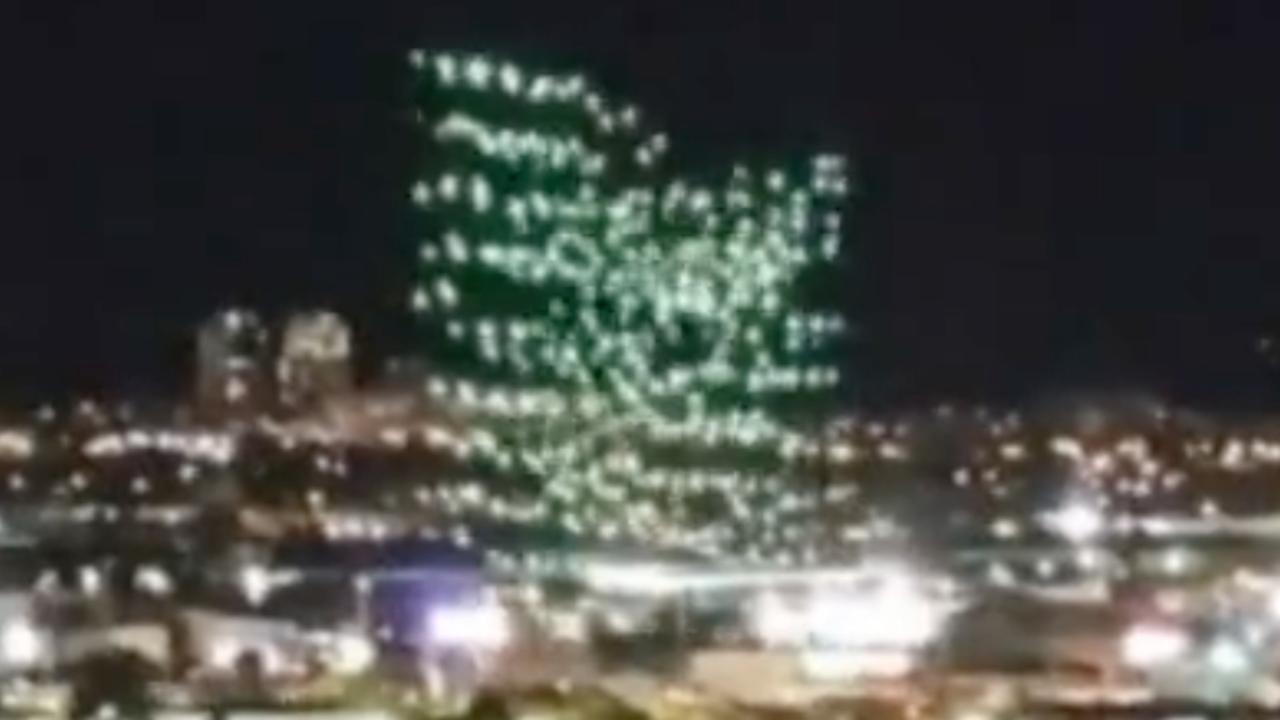Orlando drone show malfunction: This captivating account dives into the unexpected technical difficulties that plagued a recent drone light show in Orlando. We’ll explore the event’s details, the nature of the malfunction, safety concerns, public reaction, and the technical and legal fallout. Get ready for a detailed, yet easily digestible, breakdown of this fascinating event.
From the planned visual spectacle to the chaotic reality of the malfunction, we’ll uncover the contributing factors, analyze the safety implications, and examine the public and media response. We’ll also delve into the technical aspects, potential troubleshooting strategies, and the regulatory ramifications of this incident. Prepare to learn about the intricacies of large-scale drone operations and the unexpected challenges they can present.
Orlando Drone Show Malfunction: A Detailed Analysis
This article provides a comprehensive analysis of a drone show malfunction that occurred in Orlando, examining the event details, the nature of the failure, safety implications, public reaction, technical aspects, and potential regulatory ramifications. The goal is to understand the incident, learn from it, and propose improvements to prevent similar occurrences in the future.
Event Details and Context
A large-scale drone show, organized by [Company Name – replace with actual company name if known], took place on [Date] at [Time] in [Location – replace with specific location in Orlando]. The show was planned to feature [Number] drones performing a choreographed display lasting approximately [Duration]. The intended visual effects included dynamic formations depicting [Describe planned formations and visual effects, e.g., animals, landscapes, abstract designs], utilizing a spectrum of vibrant colors and intricate light patterns.
The malfunction occurred approximately [Time into the show] into the performance.
The timeline of the malfunction can be summarized as follows:
- Initial launch and formation: The drones successfully launched and began their planned sequence.
- First signs of malfunction: [Describe the first observable anomaly, e.g., a group of drones deviated from their programmed path].
- Escalation of the malfunction: [Describe how the malfunction progressed, e.g., more drones became erratic, lights flickered, formations broke down].
- Show termination: The show was abruptly halted as the malfunction worsened.
- Recovery efforts: [Describe the actions taken to recover the drones, e.g., remote control intervention, manual retrieval].
Nature of the Malfunction

The precise cause of the malfunction remains under investigation, but preliminary reports suggest a possible [Type of malfunction, e.g., software glitch, communication interference, hardware failure]. The visible effects included erratic drone movements, inconsistent lighting patterns, and a complete breakdown of the planned formations.
| Time | Drone Affected | Type of Malfunction | Visual Impact |
|---|---|---|---|
| [Time 1] | [Number] drones in formation [Formation Name] | [Type of malfunction, e.g., loss of GPS signal] | [Description, e.g., erratic zig-zag movement, inconsistent lighting] |
| [Time 2] | [Number] drones across multiple formations | [Type of malfunction, e.g., communication failure] | [Description, e.g., complete loss of synchronization, drones falling out of formation] |
| [Time 3] | [Number] drones near the ground | [Type of malfunction, e.g., battery failure] | [Description, e.g., uncontrolled descent, sudden power loss] |
Potential contributing factors could include [List potential factors, e.g., software bugs, GPS interference, unexpected weather conditions, communication signal degradation].
Safety and Security Implications, Orlando drone show malfunction
The malfunction posed several safety risks. Erratic drone movements could have resulted in collisions with spectators or property. Falling drones, though relatively lightweight, could have caused injuries. The security protocols in place, which presumably included [Mention security measures, e.g., designated no-fly zones, emergency shutdown procedures, crowd control], appeared to be partially effective in mitigating the risk, although a full assessment is pending.
That Orlando drone show malfunction got me thinking about drone safety. It’s a reminder that even with advanced technology, things can go wrong, as seen in a similar incident, check out this article on a drone crash paris for a different perspective. The Orlando issue highlights the need for better fail-safes and more rigorous testing before these large-scale displays happen.
Reports indicate [Mention any injuries, damages, or disruptions, e.g., no injuries were reported, minor property damage occurred, the event was temporarily suspended].
Public Reaction and Media Coverage

Initial public reaction on social media ranged from amusement to concern, with many sharing videos and comments expressing surprise and worry about the safety implications. News reports varied in tone, with some focusing on the spectacular nature of the malfunction and others highlighting the safety concerns. Later assessments, as more information became available, generally shifted towards a more analytical and less sensational approach.
Technical Aspects and Troubleshooting
The drones involved were likely [Describe drone specifications, e.g., quadcopters equipped with GPS, LED lighting, and onboard computers]. Possible technical causes include software glitches in the flight control system, hardware failures in individual drones, or communication disruptions between the control station and the drones. The failure to maintain synchronized flight paths may indicate a problem with either the GPS system or the communication network.
A potential troubleshooting plan to prevent future malfunctions could include:
- Rigorous software testing and validation before the event.
- Redundant communication systems to ensure reliable data transmission.
- Improved GPS signal reception and error handling.
- Enhanced battery management and monitoring systems.
- Implementation of fail-safe mechanisms for individual drones and the entire system.
- More robust pre-flight checks and system diagnostics.
Regulatory and Legal Ramifications
Drone operations, particularly public displays, are subject to various regulations, including [Mention relevant regulations, e.g., FAA regulations in the US, equivalent regulations in other countries]. The company responsible for the malfunction may face legal repercussions depending on the extent of any damages or injuries. This incident may lead to stricter regulations and improved safety protocols for future drone shows.
Illustrative Descriptions

The intended visual spectacle was a breathtaking display of light and movement. The drones, initially forming a cohesive unit, were meant to morph into various shapes and designs, utilizing a dynamic palette of colors that shifted and flowed across the night sky. Imagine vibrant hues of red, blue, green, and yellow blending together to create dazzling patterns that reflected the choreography of the drones’ movements.
The malfunction, however, presented a stark contrast. Instead of graceful formations, the drones moved erratically, their lights flickering and flashing inconsistently, creating a chaotic and disjointed display. The once-coordinated movements became erratic, with drones straying from their designated paths, colliding with each other, and plunging towards the ground in an uncontrolled manner. The scene at the event location shifted rapidly from awe to apprehension, as the audience’s initial excitement turned to concern and murmurs of worry.
Closure: Orlando Drone Show Malfunction
The Orlando drone show malfunction serves as a stark reminder of the complexities involved in large-scale drone displays. While the visual spectacle of these events is captivating, the potential for technical glitches and their resulting safety and legal implications cannot be overlooked. This incident highlights the crucial need for robust safety protocols, thorough technical planning, and a clear understanding of relevant regulations.
By examining this event in detail, we can learn valuable lessons to improve future drone shows and ensure the safety of both spectators and operators.
That Orlando drone show malfunction got me thinking about drone safety. It’s a reminder that even with advanced tech, things can go wrong, like that time a drone crashed in Paris – check out this article for the details: drone crash paris. The Paris incident highlights the need for rigorous testing and fail-safes, especially for large-scale drone displays like the one in Orlando that malfunctioned.
Hopefully, future shows will learn from these events.
Helpful Answers
What type of drones were used in the show?
This information would be found in the detailed event report, but the specific model and manufacturer are often proprietary.
Were there any injuries reported?
That Orlando drone show malfunction got everyone talking about safety protocols, right? It makes you think about how other large-scale drone displays handle things, like the amazing niagara falls drone show , which I hear has incredibly robust backup systems. Hopefully, learning from incidents like the Orlando one will improve the reliability of all future drone shows.
This would be detailed in the safety and security section of the report; however, details may be limited until official investigations conclude.
What was the estimated cost of the damage?
This is difficult to ascertain without access to internal company documents and insurance claims. The cost would vary depending on any drone damage, potential property damage, and the cost of show cancellation/re-scheduling.
What company was responsible for the drone show?
The name of the company would be specified in the event details section of the report.